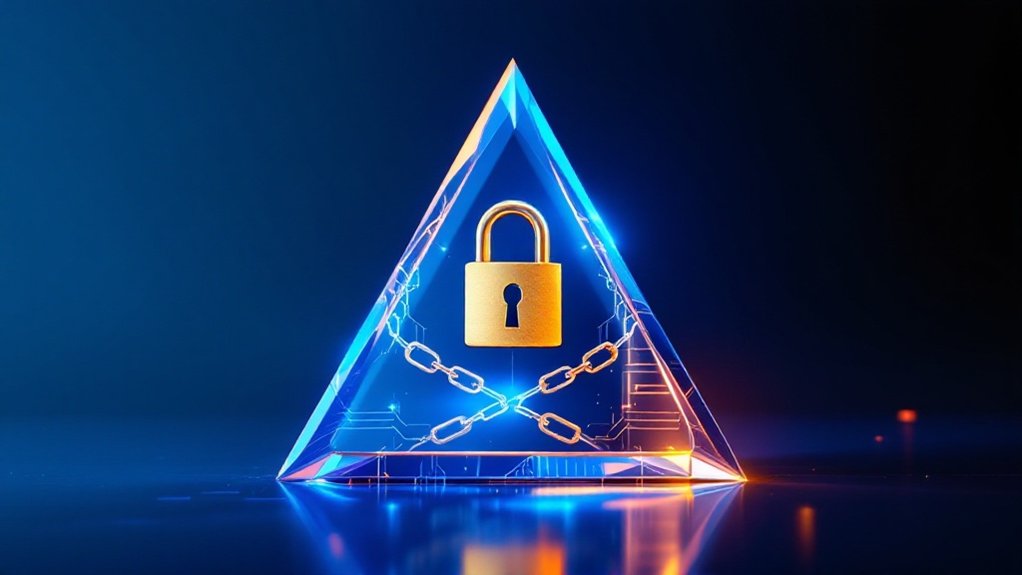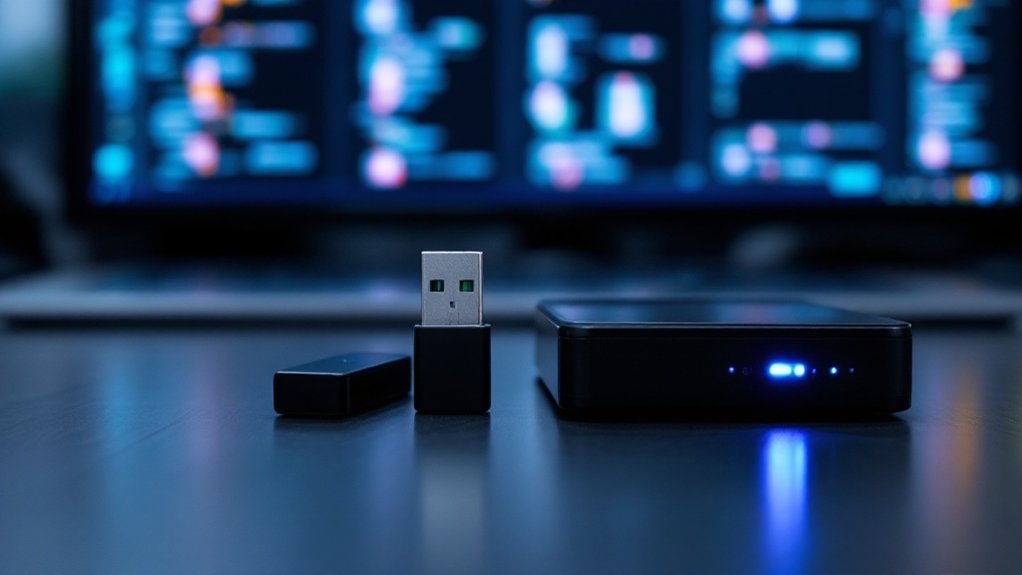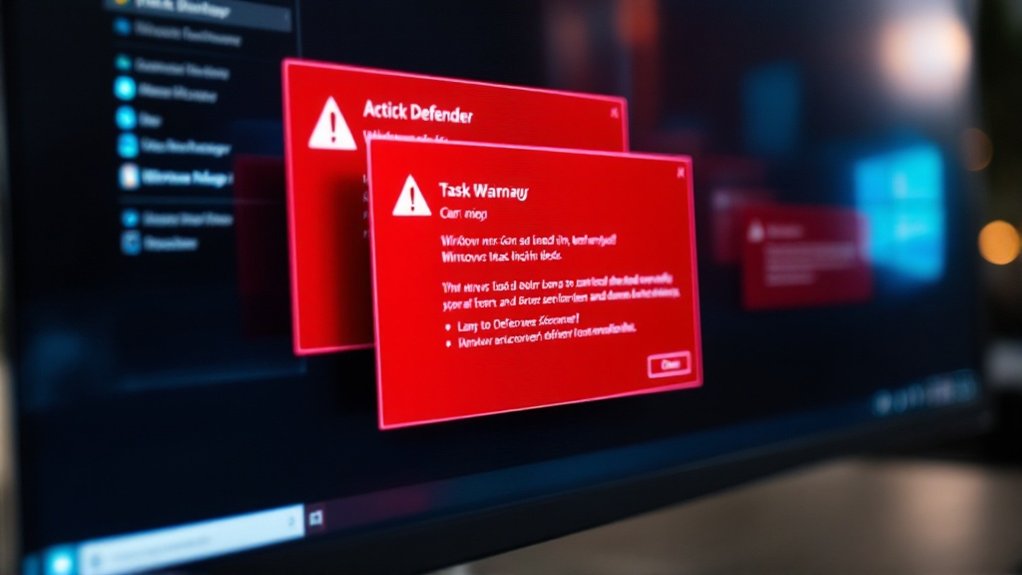The CIA Triad establishes three crucial principles of information security: Confidentiality, Integrity, and Availability. This framework, recognized in ISO 27001 and GDPR standards, provides organizations with structured protection against cyber threats, which affected 75% of companies through ransomware in 2023. Implementation includes encryption protocols, hashing algorithms, and redundant systems to safeguard data access, authenticity, and accessibility. Understanding these interconnected elements reveals the all-encompassing approach needed for modern cybersecurity defense.

As organizations face an ever-expanding array of cybersecurity threats, the CIA triad remains the foundational framework for protecting critical information assets. This model, comprising Confidentiality, Integrity, and Availability, serves as the cornerstone of modern information security practices and is recognized in international standards like ISO 27001 and referenced in GDPR Article 32, providing organizations with a structured approach to safeguarding their digital infrastructure. With 75% of organizations experiencing ransomware attacks in 2023, implementing robust security measures has become more critical than ever. Organizations must carefully consider balancing all three pillars to establish effective security measures.
The confidentiality component focuses on protecting sensitive information from unauthorized access through various security controls. Organizations implement encryption protocols, multi-factor authentication systems, and strict access management policies to guarantee that data remains accessible only to authorized personnel. These measures are particularly vital for safeguarding personal information, financial records, and proprietary data that could be compromised in potential breaches. Implementing two-factor authentication has become a crucial defense against unauthorized access attempts.
Data integrity, the second pillar of the triad, guarantees information remains accurate and unaltered throughout its lifecycle. Organizations employ various technical solutions, including hashing algorithms, digital signatures, and version control systems, to maintain data authenticity. This aspect proves fundamental for maintaining trust in organizational operations and supporting reliable decision-making processes based on accurate information.
The availability component guarantees that authorized users can access necessary information when required, simultaneously maintaining appropriate security measures. Organizations achieve this through implementing redundant systems, strong disaster recovery plans, and regular maintenance schedules to minimize downtime and service disruptions. This delicate balance between accessibility and security presents ongoing challenges for IT administrators.
Implementation of the CIA triad faces several obstacles in modern computing environments, including resource limitations and the need to balance security with operational efficiency. Organizations address these challenges through thorough security assessments, regular employee training programs, and the adoption of layered security approaches.
As technology evolves, the CIA triad continues to adapt, incorporating emerging technologies like artificial intelligence and machine learning as it maintains its fundamental principles in increasingly complex digital ecosystems.
Frequently Asked Questions
How Often Should Organizations Conduct CIA Triad Compliance Assessments?
Organizations should conduct CIA triad assessments annually at minimum, with more frequent evaluations based on risk factors. High-risk industries require quarterly reviews, whereas critical infrastructure demands monthly checks.
Continuous automated monitoring supplements these formal assessments. Additional evaluations should occur after significant system changes or security incidents.
Regulatory requirements, industry standards, and organizational risk profiles ultimately define ideal assessment frequencies.
Can Small Businesses Effectively Implement All Aspects of the CIA Triad?
Small businesses can effectively implement the CIA triad through cost-efficient strategies and scaled solutions.
By prioritizing critical assets, utilizing cloud-based security tools, and implementing basic controls like strong passwords and encryption, SMEs can achieve core security objectives.
Strategic partnerships with MSSPs, along with employee training and clear security policies, allow smaller organizations to maintain adequate confidentiality, integrity, and availability in spite of limited resources.
Which Component of the CIA Triad Is Most Commonly Breached?
Confidentiality consistently ranks as the most frequently breached component of the CIA triad, according to cybersecurity research and incident reports.
Organizations face persistent challenges in protecting sensitive data from unauthorized access, with malware infections and phishing attacks serving as primary vectors.
Human error, including weak password practices and accidental data exposure, contributes greatly to these breaches, whereas unpatched software vulnerabilities provide additional attack surfaces for malicious actors.
What Certifications Focus Specifically on CIA Triad Implementation?
Several major cybersecurity certifications highlight CIA triad implementation.
The Security+ certification, offered by CompTIA, covers CIA principles at an entry level, whereas CISSP provides advanced coverage across multiple security domains.
CISM focuses on CIA within information risk management frameworks, and ISO 27001 Lead Implementer certification integrates CIA concepts throughout its Information Security Management System implementation methodology.
How Does Cloud Computing Affect Traditional CIA Triad Principles?
Cloud computing fundamentally transforms CIA triad principles through distributed data architectures and shared responsibility models.
Confidentiality faces increased risks from multi-tenancy environments and expanded attack surfaces. Data integrity requires new synchronization mechanisms across geographically dispersed locations.
Availability now depends heavily on internet connectivity and service provider reliability.
Security frameworks have shifted from traditional perimeter-based approaches to data-centric models emphasizing identity management and continuous monitoring.









